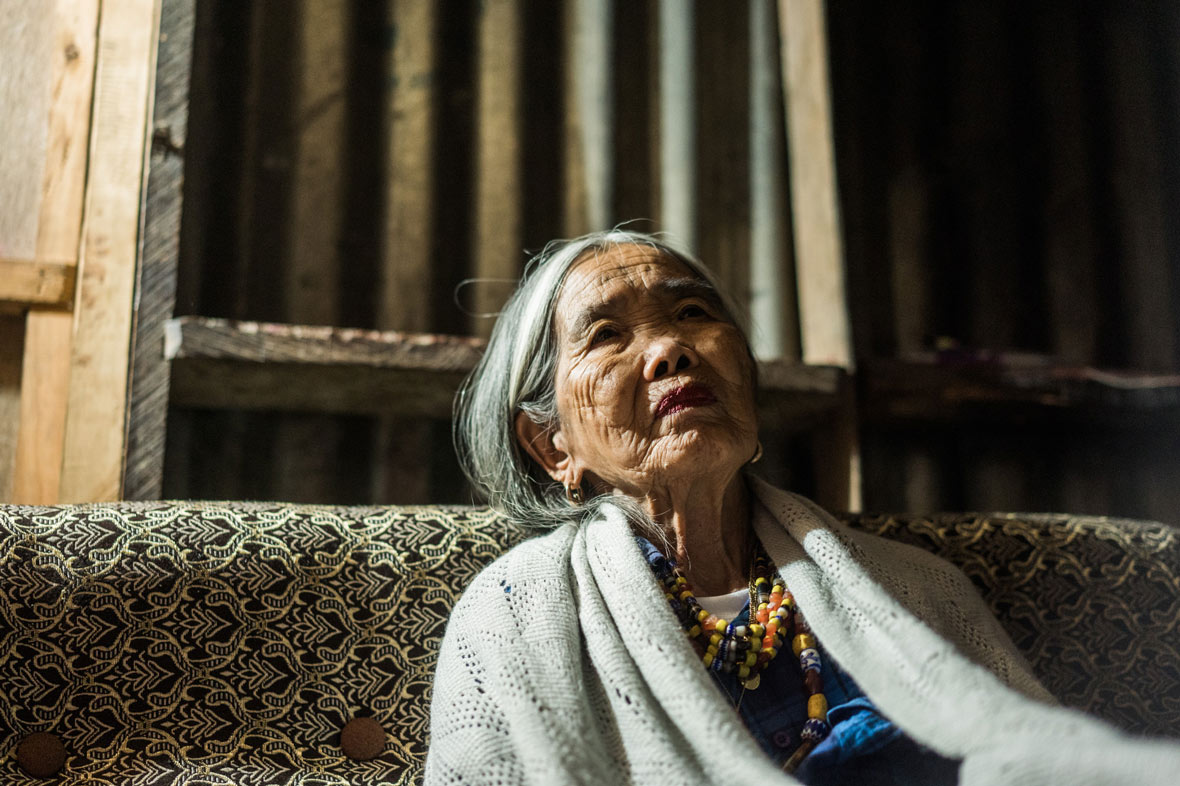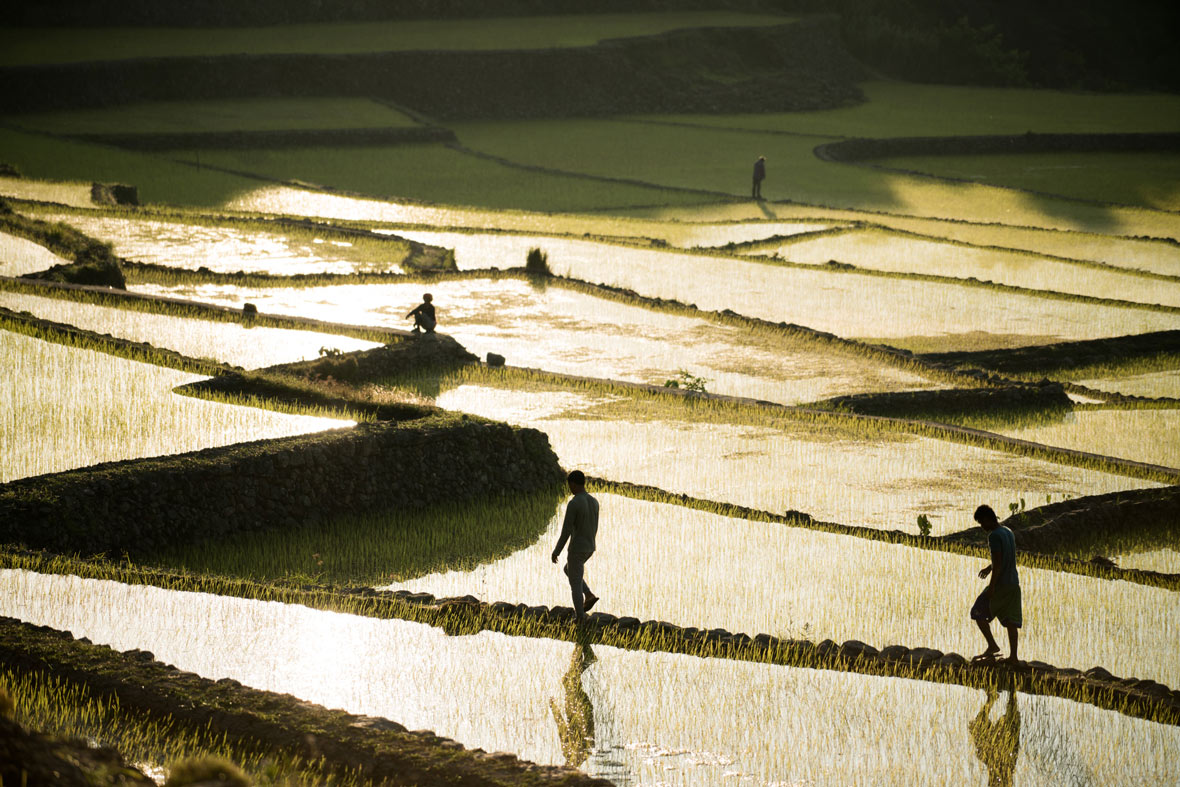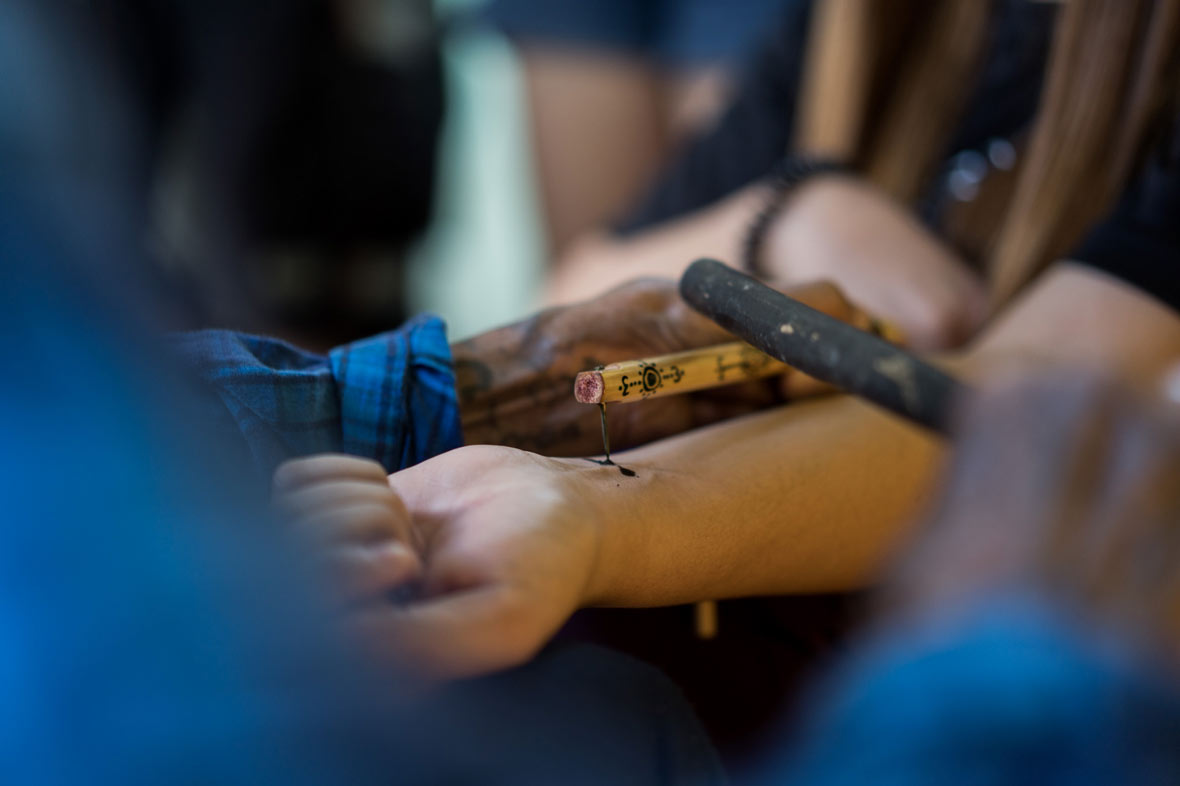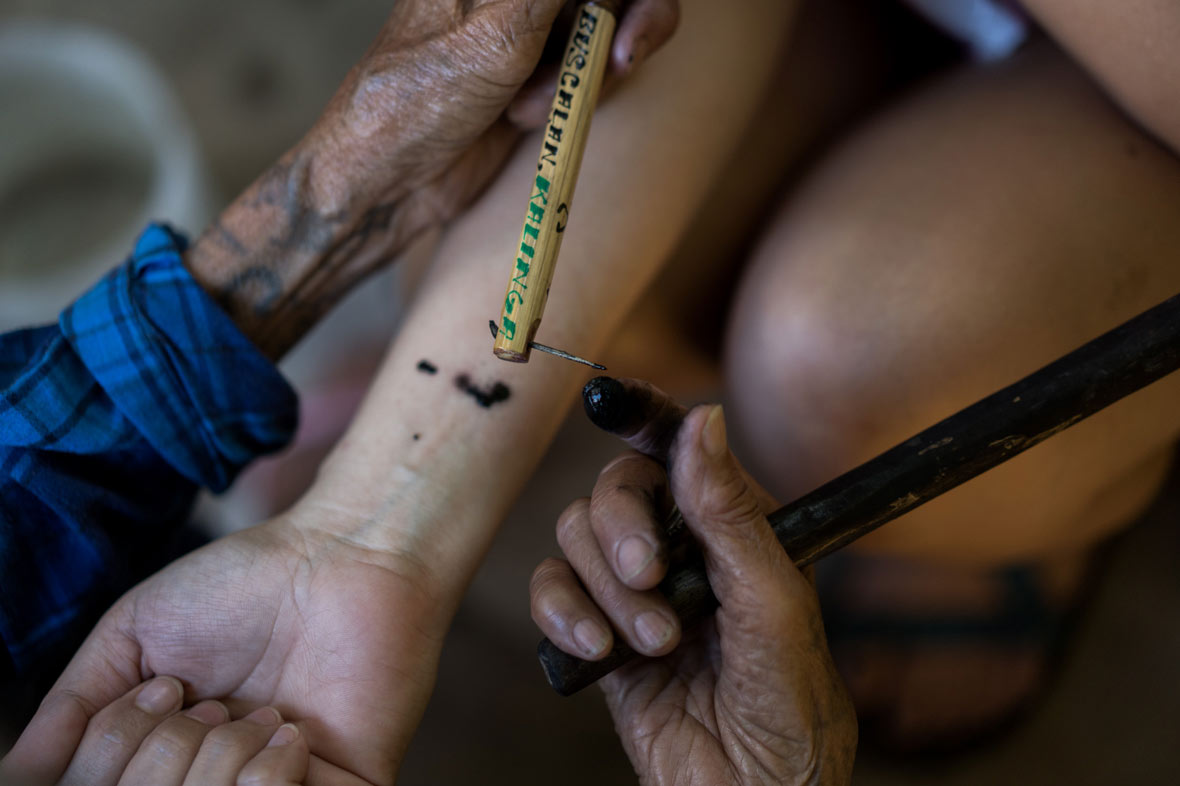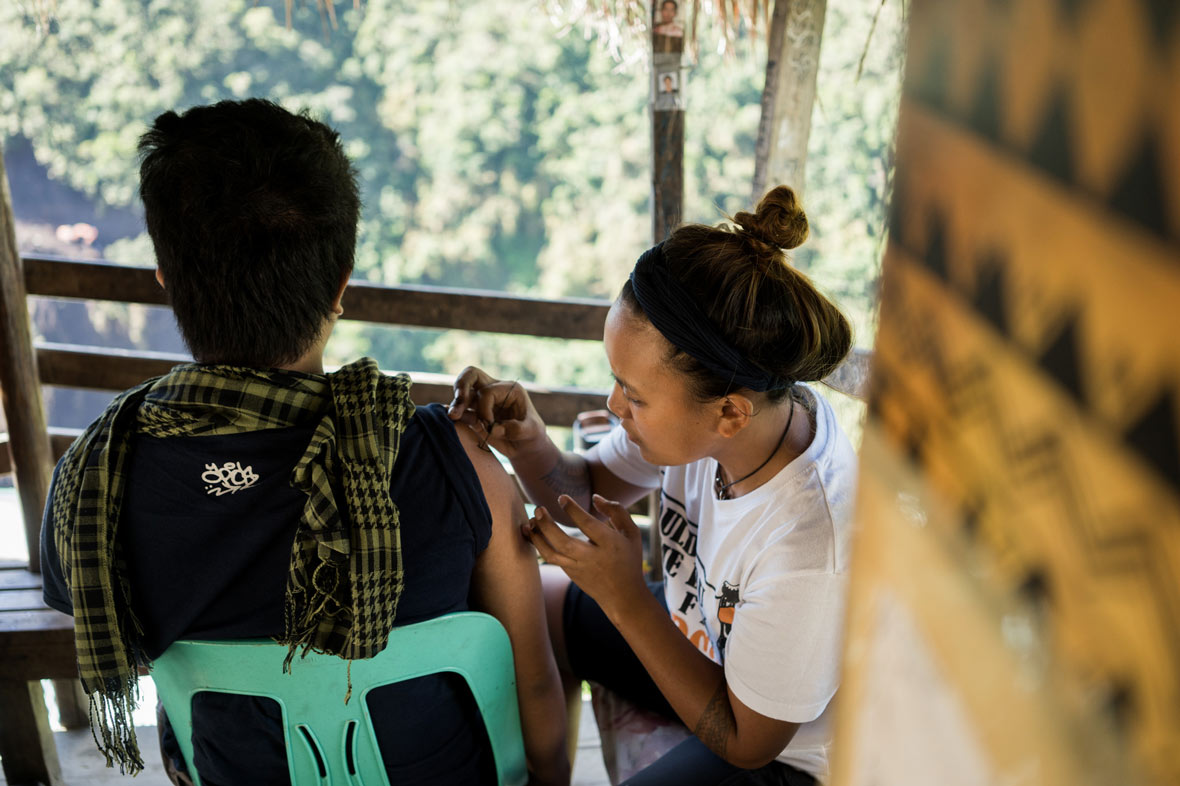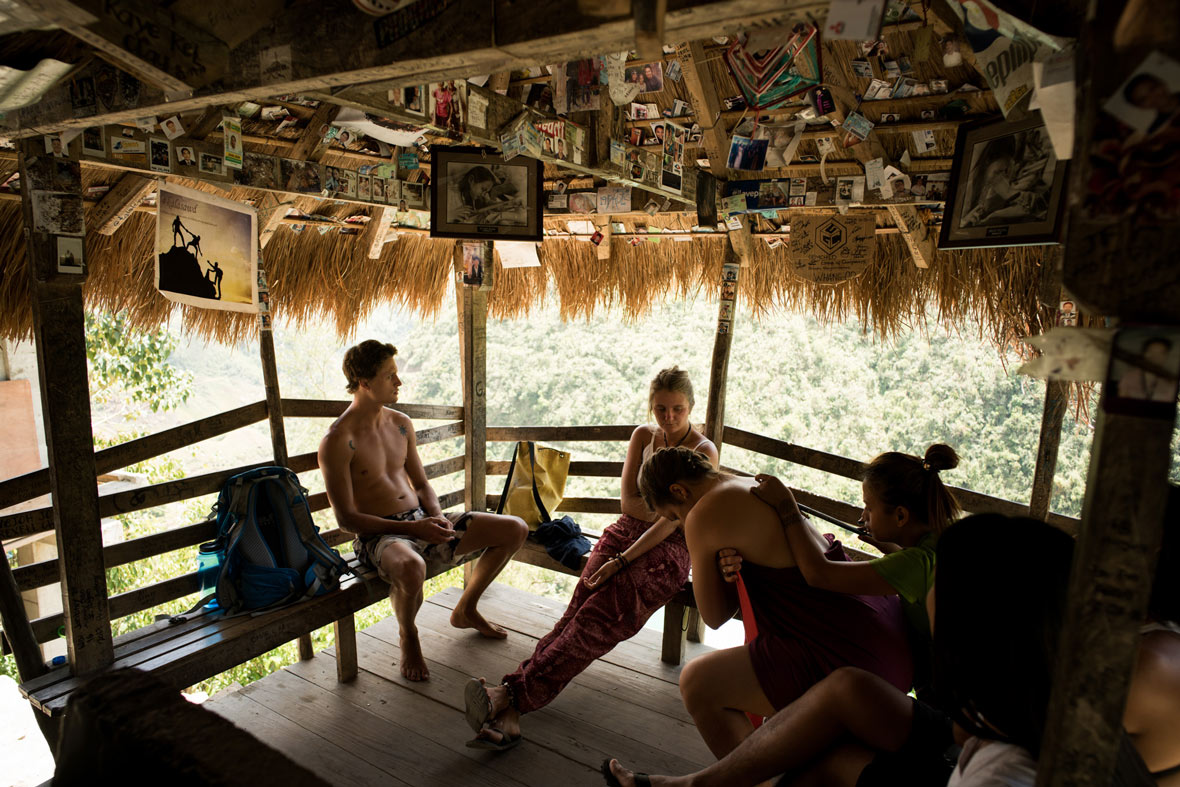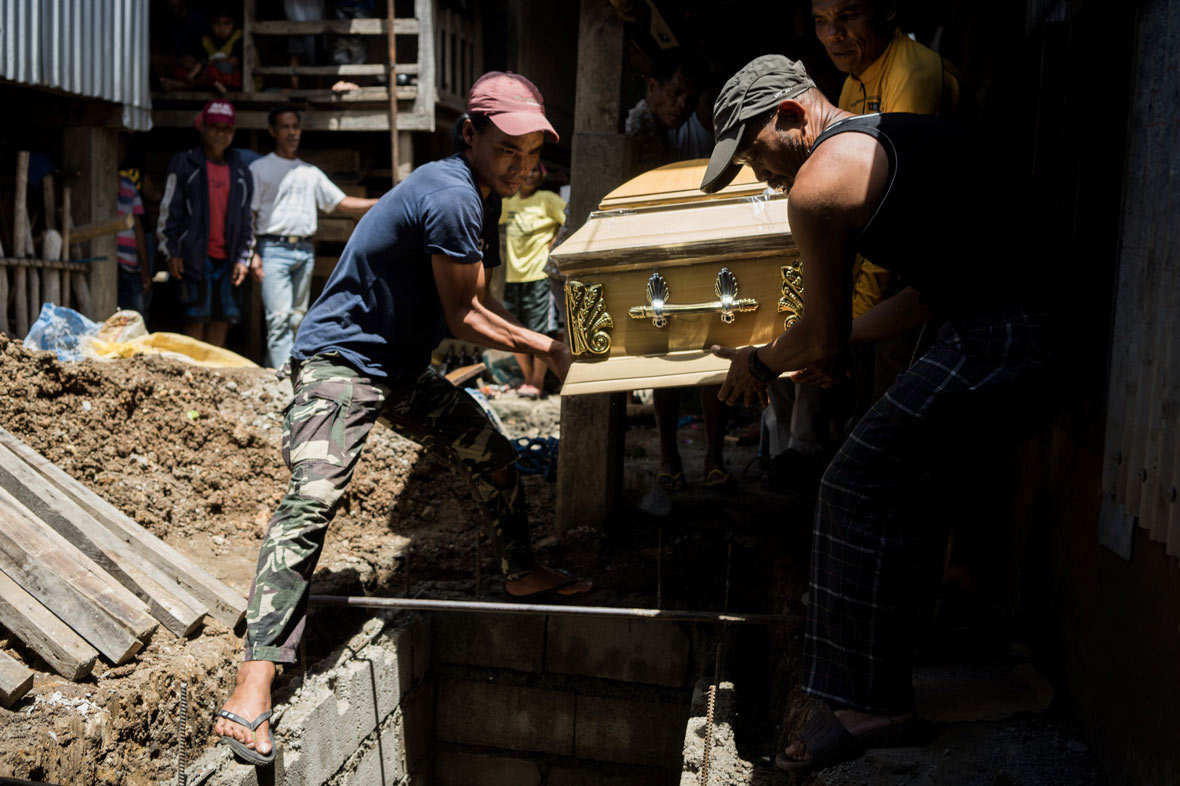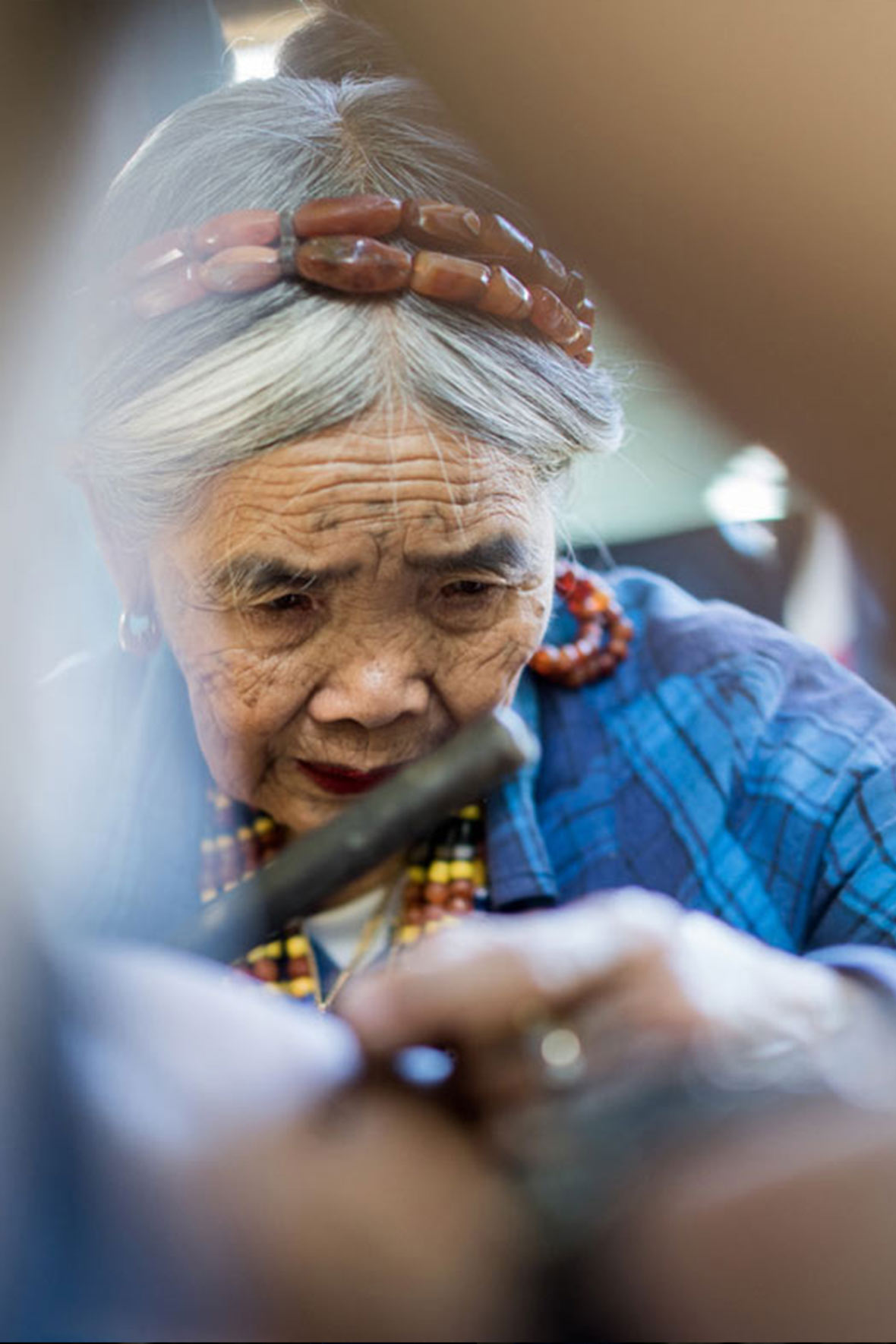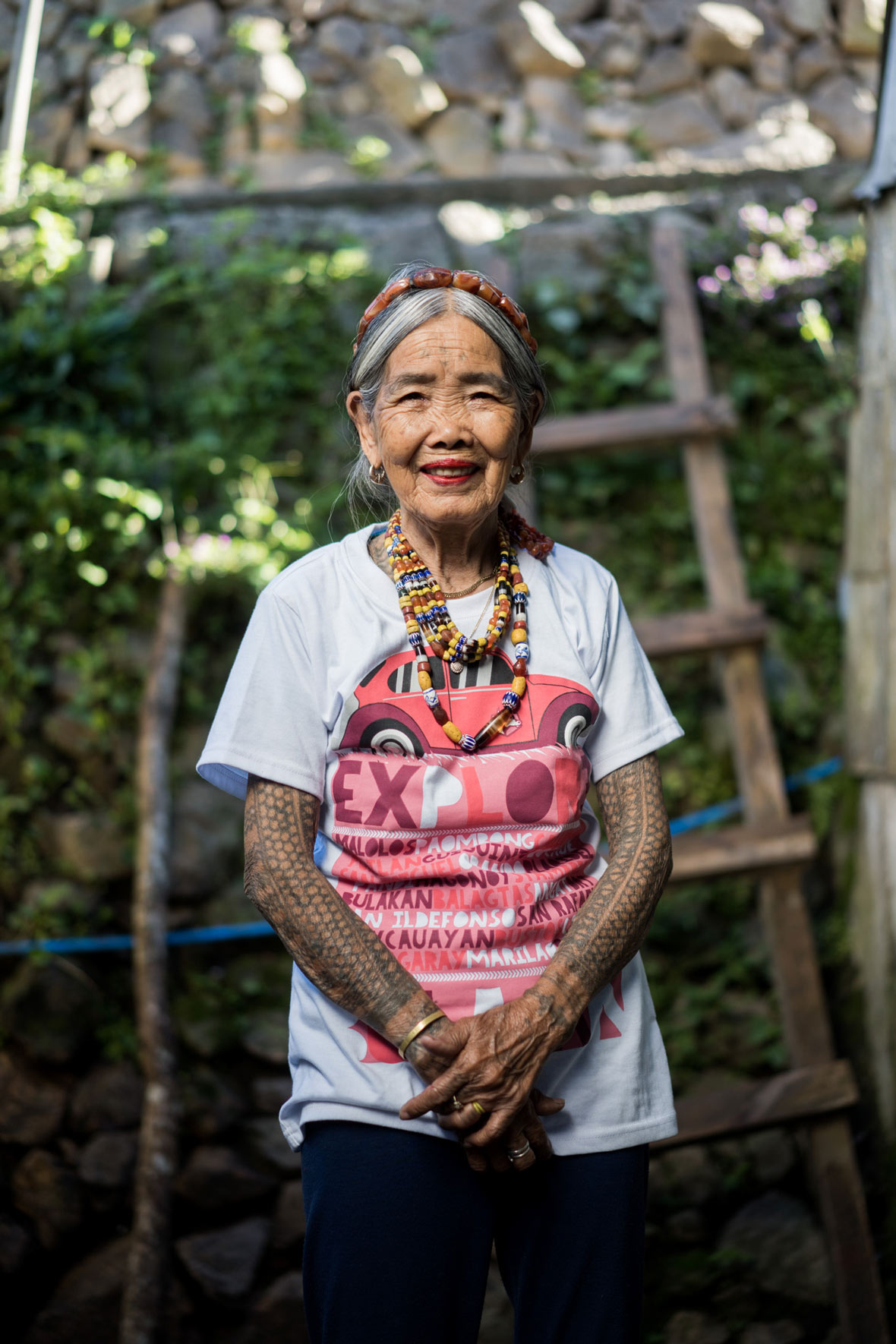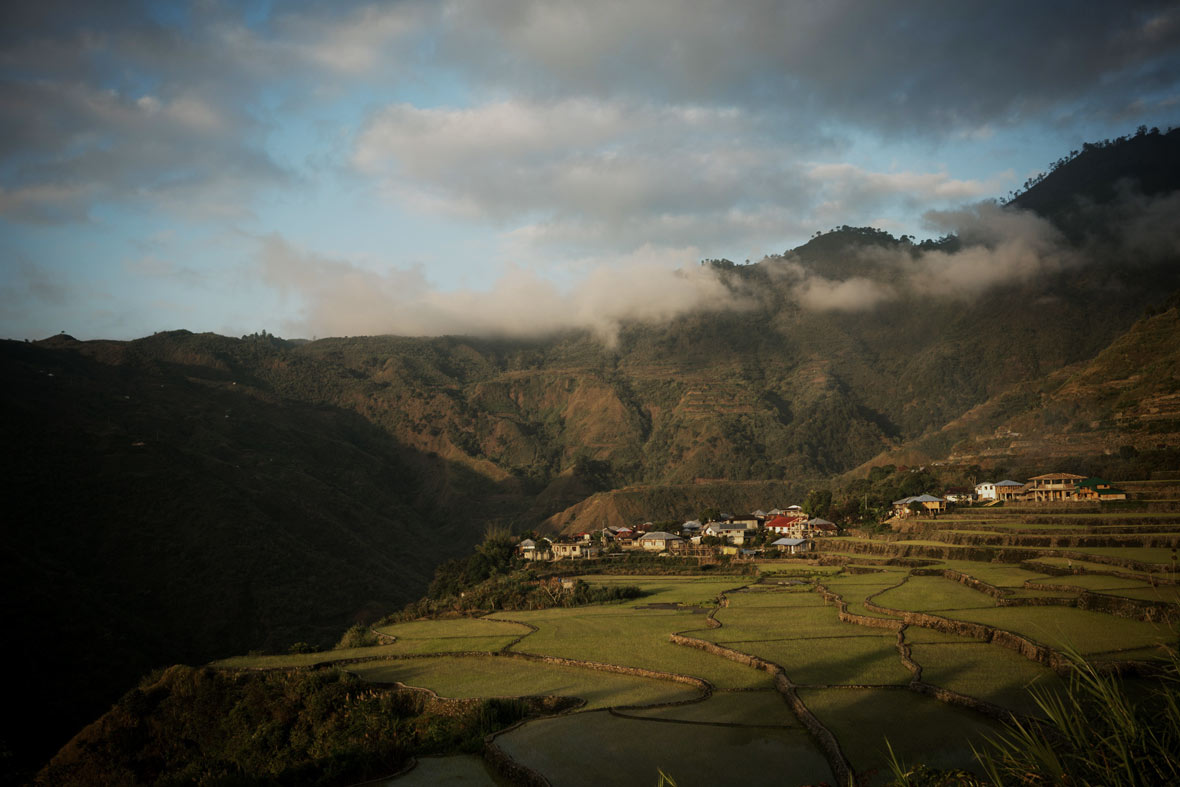
Deep in the mountains of Kalinga province, on the northern edge of the Philippines, live the Butbut tribe. For centuries they had little contact with outsiders, but over the last decade they’ve attracted widespread attention for their traditional tattooing techniques. That’s thanks largely to Apo Whang Od, a 102-year-old woman who for the last 87 years has practiced the art of batok, or hand-tapped tattooing. Now she’s transformed the tiny village of Buscalan into a mecca of sorts for travelers seeking unique tattoos.
在菲律宾北部卡林加省(Kalinga)的山林深处,Butbut 部落在此生活着。几个世纪以来,他们极少与外界接触,但在过去十年间,部落传统的纹身技艺逐渐引起外界的广泛关注,这必须归功于已经 102 岁的 Apo Whang Od。在过去的87年里,她一直在从事 Batok 这项手工纹身艺术,正是她将 Buscalan 这座隐世小村庄,变成寻求独特纹身的游客的朝圣之地。
Buscalan is a 14-hour drive from Manila, the final three hours of which are endless hairpin curves on roads cut into the steep Cordillera mountainside, overlooking seas of fog. It’s perched near the top of a towering mountain and surrounded by rice paddies for subsistence farming. The road ends before it reaches the village, but construction crews inch closer every day. The final stretch has to be hiked, down a valley and up a steep incline, past the carabao water buffalo that are guided up the narrow paths by their horns. On our last day, an excavator causes a landslide—a common occurrence, even without the construction—across the path between the village and the road. But it’s a brief interruption, and the villagers simply walk over the dirt to create a new, equally temporary path.
Given this terrain, it’s no wonder that the Spanish colonizers left villages like Buscalan undisturbed. The Kalinga remained relatively isolated until the US took control of the Philippines at the turn of the twentieth century. Under the pressure of an increasing Western presence, their tattoo culture seemed destined to be lost. Whang Od was the last Kalinga batok artist in the region, and her village had no plans to teach a new generation.
Buscalan 村庄距离马尼拉大约14小时的车程,最后三小时的路程是陡峭的科迪勒拉山山路。绕过无数个连续的发夹弯,伴随一旁的是云海萦绕的美景,而村庄就坐落于附近一座高山的山顶。四周放眼望去是稻田,用以种植部落村民的粮食,在到达村庄前,所谓的路就没有了。每天还有施工人员在努力修建通往村庄的道路,但进度很慢。最后一段路必须要徒步前往,向下走过一个山谷,再爬过一座陡坡,能看到一群水牛被牵着角沿着窄小的山路向上走。我们在村庄的最后一天,一台挖掘机导致了山体滑坡。事实上,即使没有挖掘机,这段通过村庄的山路也常常发生山体滑坡。但滑坡只是让人们的通行暂时中断,过了一会,村民又会踩着新覆盖的泥土,走出一条新的临时山路。
有了这样地形,也难怪当年的西班牙殖民者会放过 Buscalan 村庄。卡林加始终保持着相对与世隔绝的状况,直至二十世纪初期,美国占领菲律宾。随着西方文化的逐步入侵,村庄的传统纹身文化似乎注定要消失。Whang Od 是当地最后一批的 batok 纹身艺术家,村庄当时也没有计划要为这种传统技艺寻找新一代的接班人。
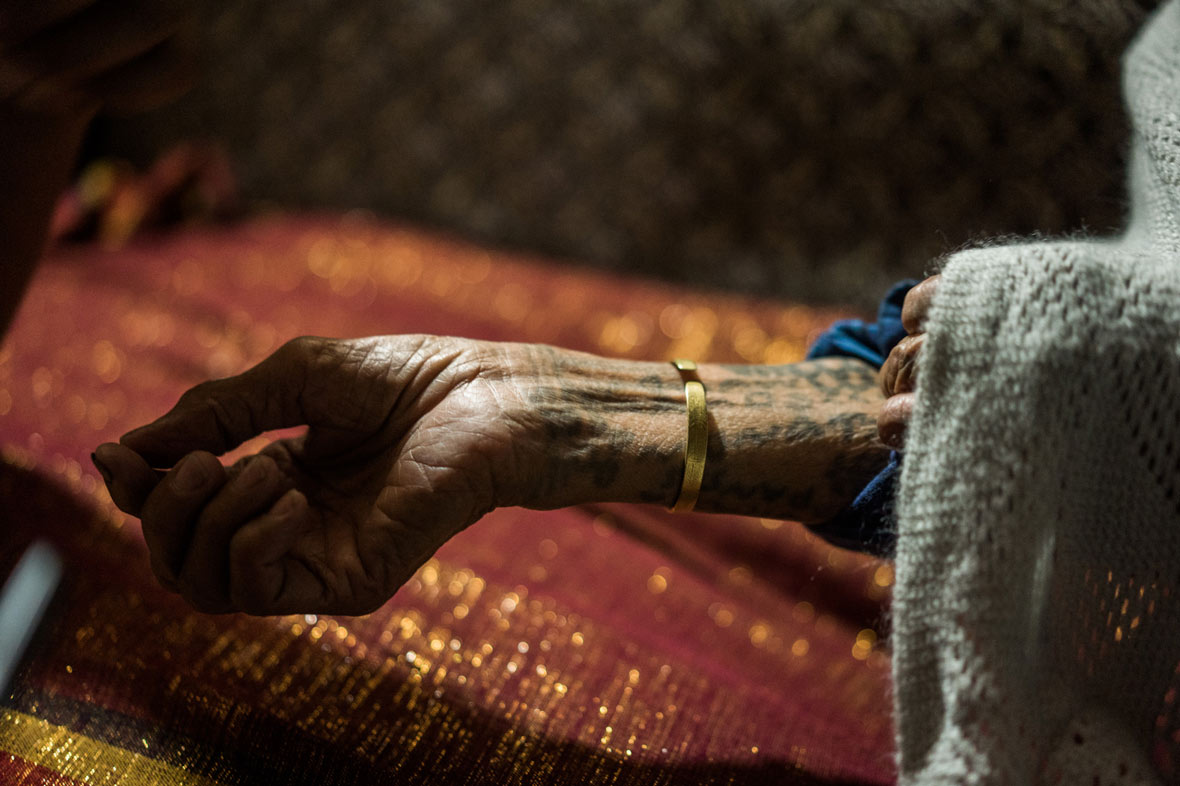
In the past, tattoos were given for a specific reason: men received them for acts of bravery, while women received them for beauty, fertility, or the valor of male relatives. Whang Od gave the last of such tattoos in 2007, when she tattooed her brother-in-law for killing an opponent in a nearby village. But the Kalinga had long ago begun losing interest in tattoos commemorating violence, and their craft was on the verge of extinction.
When Lars Krutak, a self-described tattoo anthropologist, visited the village in 2007, his encounter with Whang Od changed everything. Krutak’s Discovery Channel show, Tattoo Hunter, brought international attention to Buscalan village and the Kalinga tattoo tradition.
在过去,人们纹身总是出于一定的原因:男子纹身用来象征勇敢的精神,而女子纹身则是为了表达美、生育,或是表达男性亲属的英勇。2007 年,Whang Od 给她的姐夫的纹身,正是最后一个具有如此含义的纹身。当时,她的姐夫击杀了附近村庄的一名对手。但是,现在的卡林加早已不再推崇这种赞美暴力的纹身,这种纹身技艺也因此濒临灭绝。
2007 年,自称为 “纹身人类学家” 的拉斯·克鲁塔克(Lars Krutak)来到村庄,他与Whang Od 的相遇带来了转机。克鲁塔克制作的《Tattoo Hunter》(《纹身猎人》)纪录片在探索频道(Discovery Channel)播放后,引起全球人们对 Buscalan 村庄和卡林加传统纹身的关注。
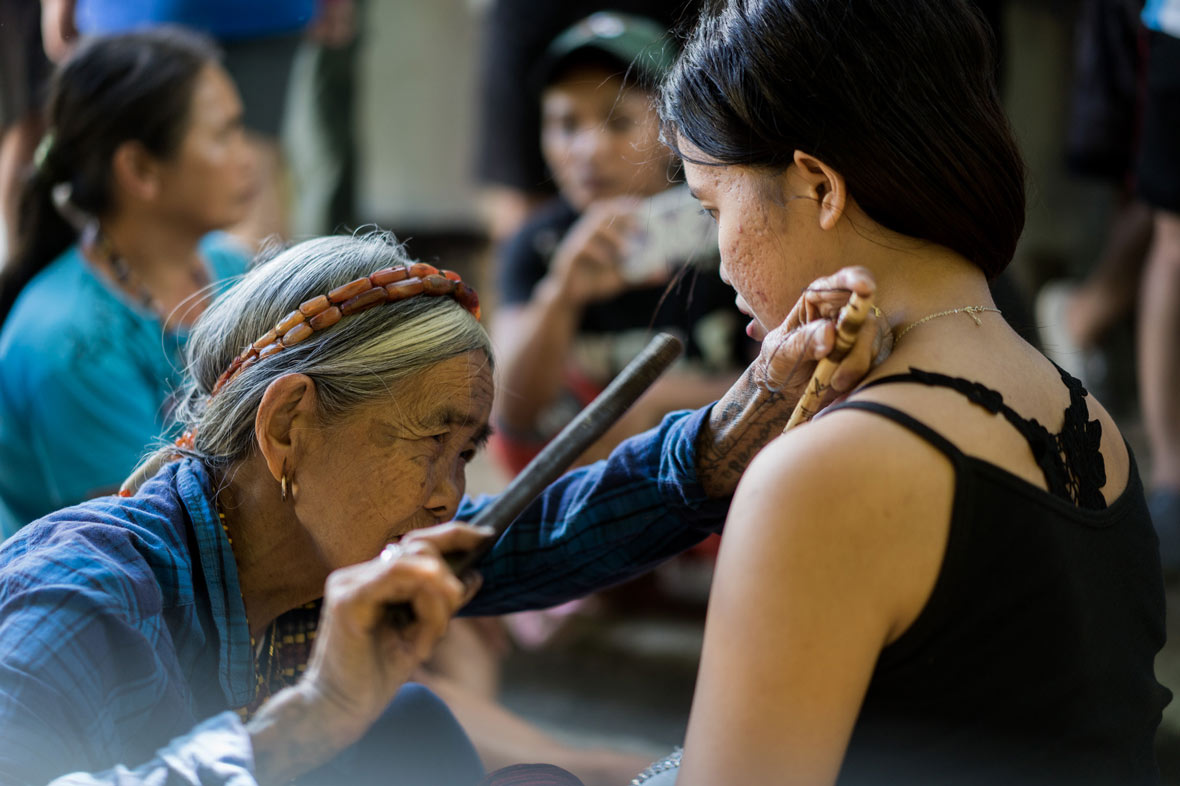
These days tattoos are given simply for their beauty, and visitors make the difficult journey by the dozens to meet Whang Od and a fresh crop of young artists. Traditional Kalinga tattoos are made with a simple wooden stick threaded with a plant thorn, which is dipped into soot water and then repeatedly hand-tapped into the skin with another stick, creating a mark.
现在,人们纹身纯粹是出于美观的原因。大批的游客长途跋涉到这里,去拜访 Whang Od 和当地一批年轻艺术家。传统的卡林加纹身是用木棒插上植物刺,浸入墨水,然后反复敲击刺到皮肤上,勾画出图案。
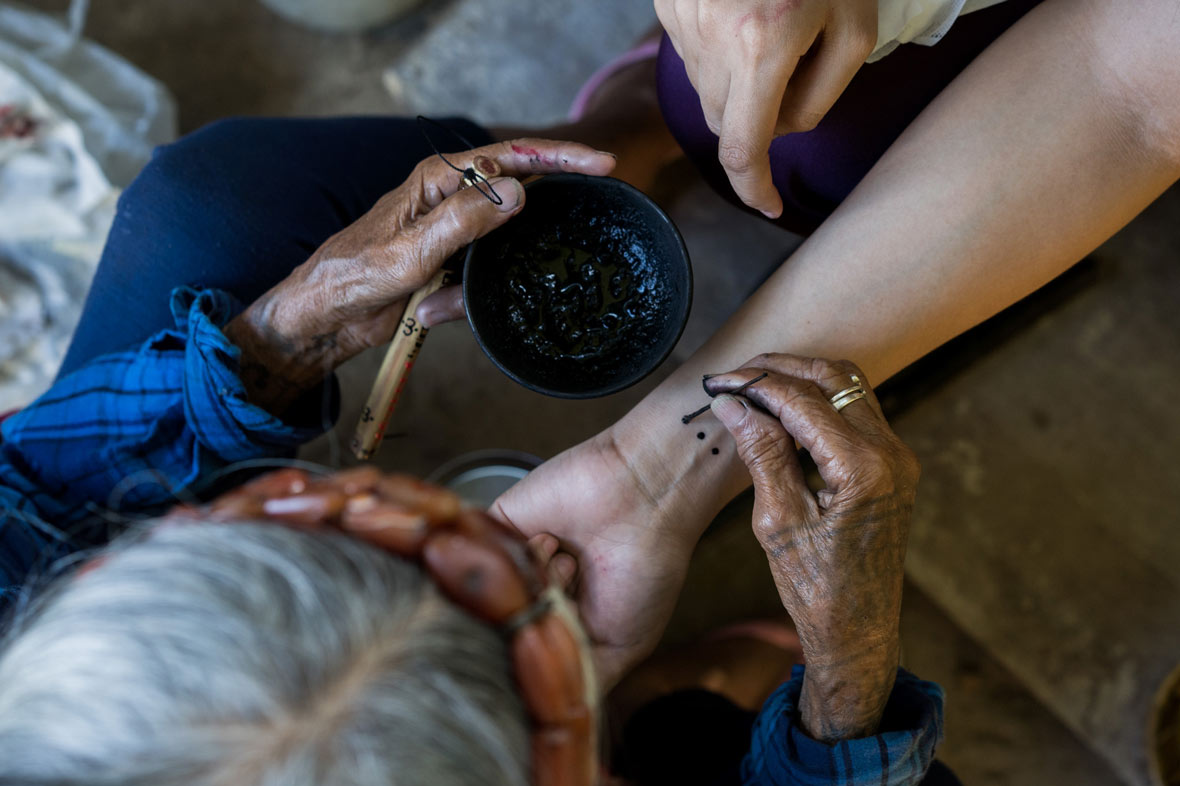
Sounds drift easily through the village and across the silent mountains around it. In Buscalan, wooden homes on stilts are packed tightly together, separated only by skinny concrete paths and stairwells. Families of pigs and chickens wander freely while children bathe in frigid water piped in from streams above. On weekends, the tapping of tattoos reverberates all about the village, while young artists work on the skin of tourists wherever there’s a free corner.
There are now 20 new artists, ranging from 9 to 28 years old, all women and girls except for one boy. (Traditionally, they were often women as well.) Everyone in this younger generation has learned on their own simply by observing Whang Od, without any formal training.
在这个小村庄,所有的声音都很容易穿过寂静的群山,传达到各个角落。在 Buscalan,仅用柱脚支撑的木屋紧紧挤在一起,只用窄小的混凝土小路和楼梯间隔开来。放养的猪和鸡自由自在地走来走去,小孩用山上河流抽取的冷水洗澡。周末的时候,纹身的敲击刺声在村庄里此起彼伏,年轻艺术家在各个角落里为游客纹身。
现在村庄里有 20 名新纹身艺术家,年龄分别从 9 岁到 28 岁不等,大部分都是女性,只有一位是男孩(传统上,纹身师也往往都是女性)。这些年轻纹身师都是通过观察 Whang Od 工作学会纹身的,全都没有接受过任何正式的训练。
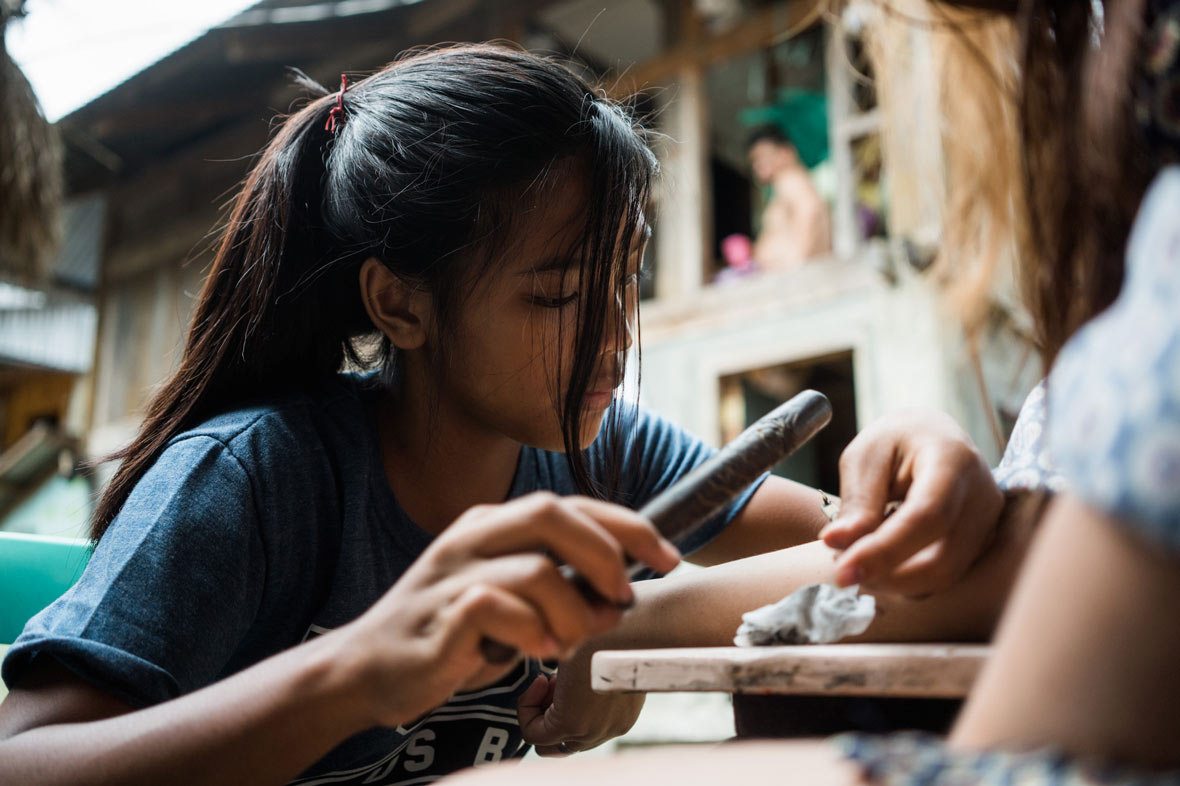
The village overlooks a vast canyon, and on the opposite slope a distant line of identical vans can be made out bringing a constant procession of visitors toward the village. With this view, Emily sits beneath a thatched-roof hut pasted with graffiti stickers and photos of tourists, while a long line of customers awaits her attention. The oldest of the new generation and the granddaughter of Whang Od, she works with a deep but comfortable focus, oblivious to the crowd.
村庄下面是一个巨大的峡谷,在对面的斜坡上,可以看到一排排样貌单一的面包车,源源不绝地运送游客到村庄。Emily 就坐在一座茅草屋顶的小屋中,里面贴满各种涂鸦贴纸和游客照片,游客排着长队,等待她来给自己纹身。Emily 是新一代纹身师中年龄最大的,也是 Whang Od 的孙女。她专注、平静地工作,仿佛对外面的人群浑然不觉。
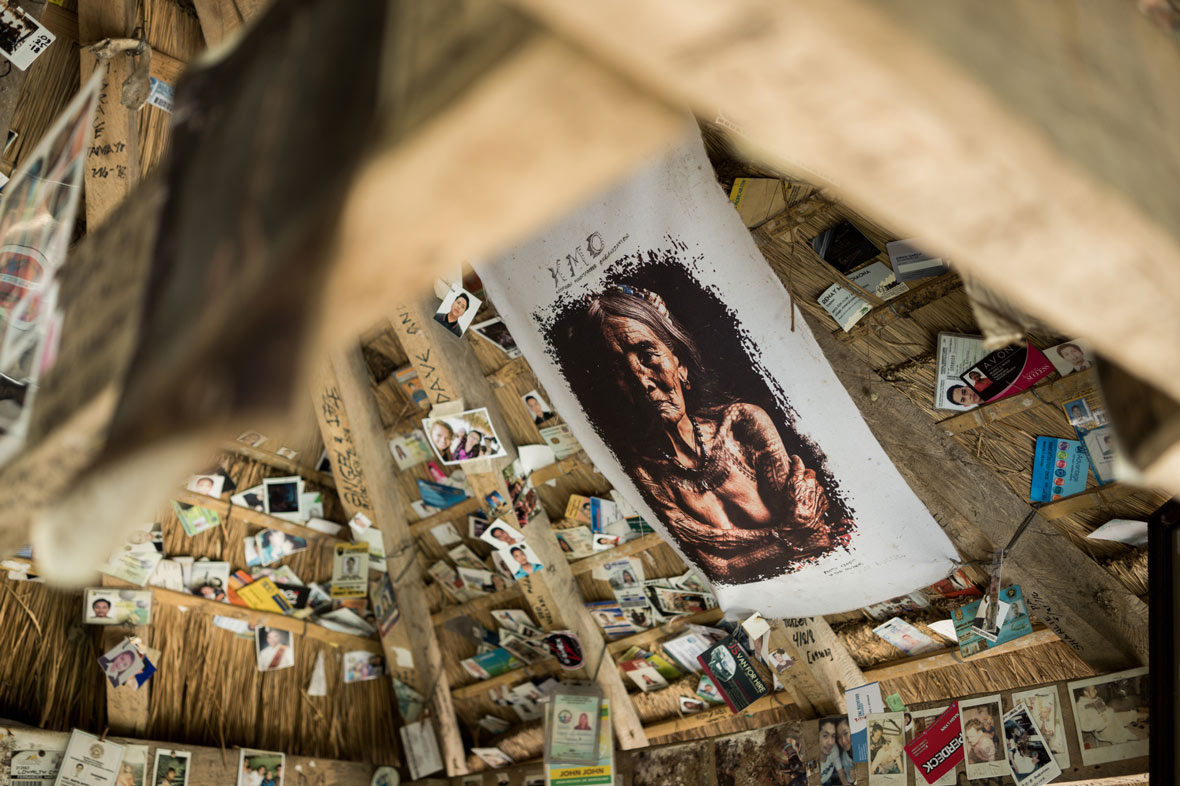
In another part of the village, a crowd of locals gathers for the funeral of a 105-year-old man who has just passed away. They dig a hole next to his home and bury him there in casket. Flat gravestones lie directly in the paths that criss-cross the village. The man’s death leaves only Whang Od and one other centenarian, who still works as a rice-wine maker.
在村子的另一头,当地人正聚集起来,参加一位刚刚去世的 105 岁老人的葬礼。他们在老人家旁边挖了一个洞,用来埋葬棺材。一块块平坦的墓碑直接就铺放在村庄里纵横交错的村路上。现在,村庄里的百岁老人只剩下 Whang Od 和另一位老人,这位老人至今还从事着制作米酒的工作。
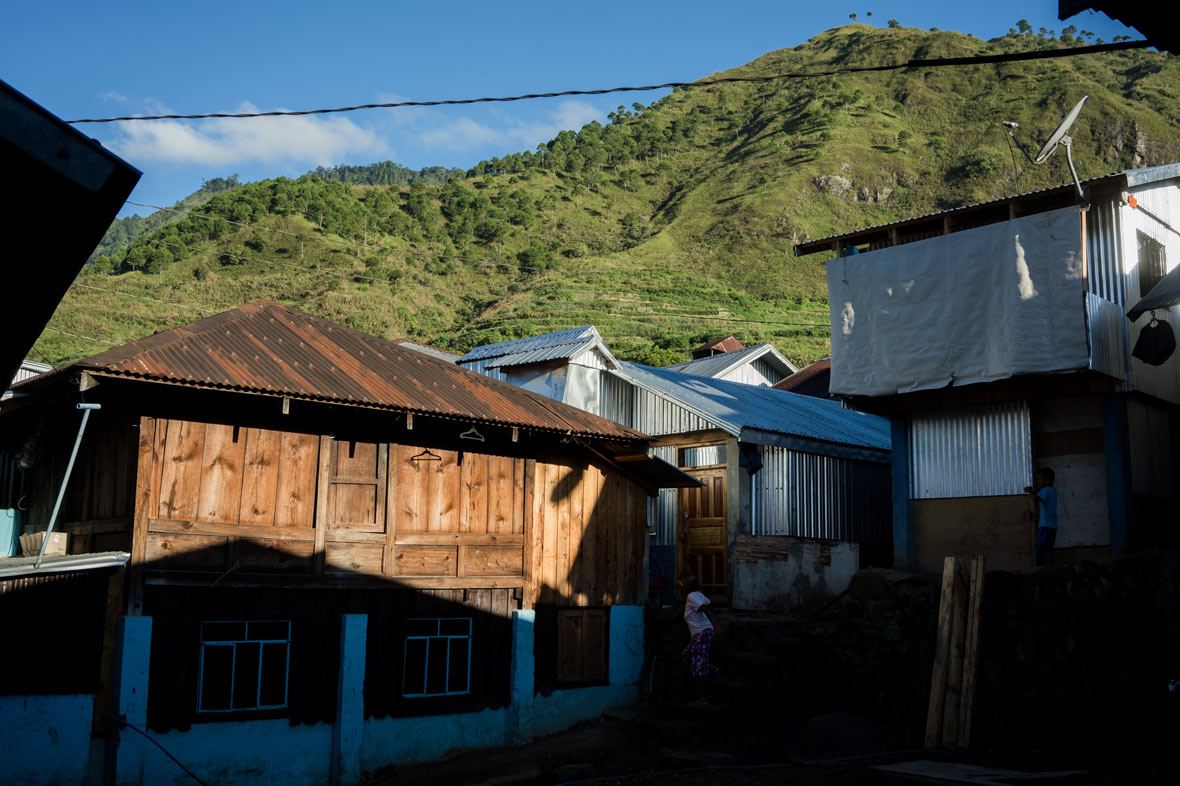
Whang Od continues to work as well, although she says her right arm gets tired and her knees ache now. Work is practically all she does these days, aside from rest. Her own crowd gathers around as she squats and hammers her signature three dots. She works sporadically, taking breaks and smiling happily for photos and making jokes in her native Kalinga.
Whang Od 也还在继续工作,但她说自己的右臂已经开始会累,膝盖也有点疼。除了休息之外,她几乎所有时间都在工作。在村民的围观中,她蹲着身子,敲击出她的经典三点纹身。纹身的时候,她时不时会休息一下,露出微笑让别人拍照,并用她的母语卡林加语谈天说笑。
As the sun sets and work comes to an end for the day, Whang Od sits at home with a blanket covering her weathered, tattooed skin. She’s pleased with the popularity batok tattoos have found: even if they’ve lost most of their traditional and spiritual significance, their beauty is still appreciated.
Whang Od’s favorite design is a snakeskin pattern, which she says is one of the oldest. “I’d be happy if all the kids today got tattoos,” she says, noting that tourism has created a livelihood for everyone in the village. Her earnings go to daily needs like sugar and rice, as well as the education of her grandchildren. Instead of farming or searching for work elsewhere, villagers can earn a living in Buscalan, making tattoos, selling souvenirs, or working as tour guides or homestay hosts. “When I stop tattooing for good, I hope tourists won’t stop coming to our village. If they do, my efforts will have gone to waste.”
当太阳落下,结束一天的工作后, Whang Od 坐在家里,披上一块毯子,裹住自己身上开始褪色的纹身。她很开心 batok 纹身技艺能再次流行起来,尽管纹身本身的传统和精神意义很大程度上已经消失,但纹身之美仍然被人们所赞赏。
Whang Od 最喜欢的图案是一种蛇皮图案, 她说这是最古老的纹身图案之一。“如果现在所有孩子都能有纹身,我会很高兴。” 她说,旅游业为村里创造了收入,她的收入也足够满足日常需要, 比如买糖和大米,还能供她的孙子上学。村民们可以在 Buscalan 村庄里谋生,纹身、卖纪念品、做导游或开设寄宿家庭,不用离开村庄去耕作或寻找工作。“当我不再纹身时,希望游客不会就此忘记我们村庄。否则,我的努力将会付之流水。”
